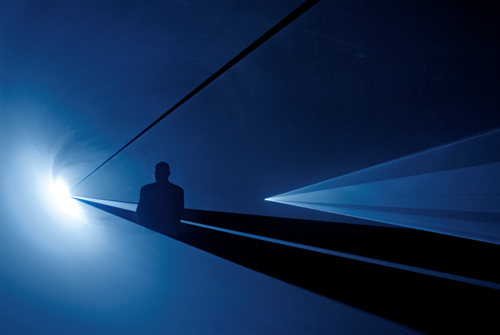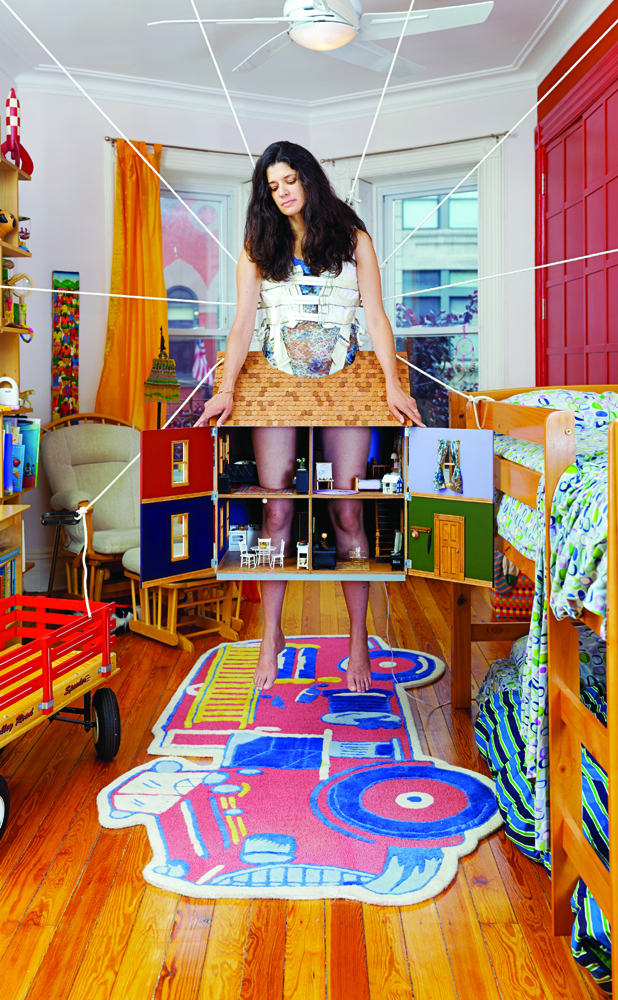
Anthony McCall, You and I, 2007; Horizontal (III) Installation view at Sean Kelly Gallery, New York, 2007. © Anthony McCall; Photography: Steven Harris; Courtesy: Sean Kelly Gallery, New York
During his appearance at our series Conversations with Artists on February 15, Anthony McCall elaborated on the experiential character of his “solid light” installations. At one point he said:
You are incorporated into [the installations], and they’re absorbing . . . people always reach out and touch these membranes because they’re very paradoxical . . . I don’t like the blissing out . . . it doesn’t need you to think, it just needs you to be there.
When I heard McCall say this, I couldn’t help feeling confused—disillusioned even. What did he mean by “blissing out”? Why didn’t he like it? Did this mean viewers like me couldn’t like it either?
Interaction with light is an experience necessary to fully understanding McCall’s enormous ‘solid-light’ installations. Often featuring huge three-dimensional cones, waves, and lines of light projected in darkened lofts or galleries, these installations transcend projectors and screens, playing with the dimensionality of light and blurring the distinctions between cinema, form, and space. It’s easy to lose yourself in such an atmosphere. At times it seems the installations are almost begging you to bliss out. So why must McCall tell us to control ourselves when it is so tempting to abandon our thoughts in his art?
Further into the conversation I found my answer. McCall explained that he avoids creating wholly immersive environments where the viewer is prone to unconscious pleasure. Meaning, he doesn’t believe art should overwhelm or sedate the mind.
“Blissing out” is not the wrong way to experience his art, but it is not a fulfilling way. It allows viewers to detach themselves from active aesthetic experience and understanding. If I’m in a position to lose myself in a McCall installation, I don’t need to think or be present; I wouldn’t need the art, and the art wouldn’t need me.
With this renewed perspective, I’m looking forward to March 28, when I’ll have the chance to hear from Janine Antoni, the second of three Conversations this spring. In her work, Antoni forces herself and the viewer to be physically engaged in art; there’s absolutely no opportunity for blissing out when Antoni’s around. Her performance-based pieces are more aggressive than Anthony McCall’s subtle, ethereal sculptures, and it will be interesting to weed out the similarities between these artists’ radically different approaches to engaging the viewer.
Madeline Bouton, Center for the Study of Modern Art Intern

